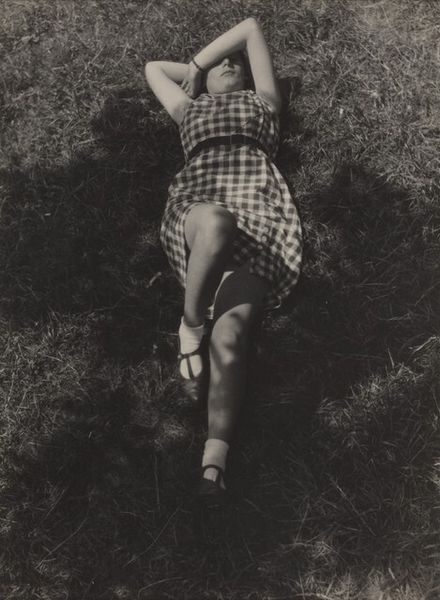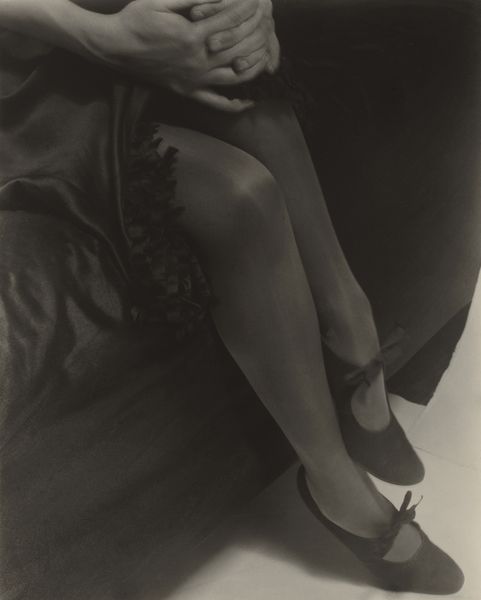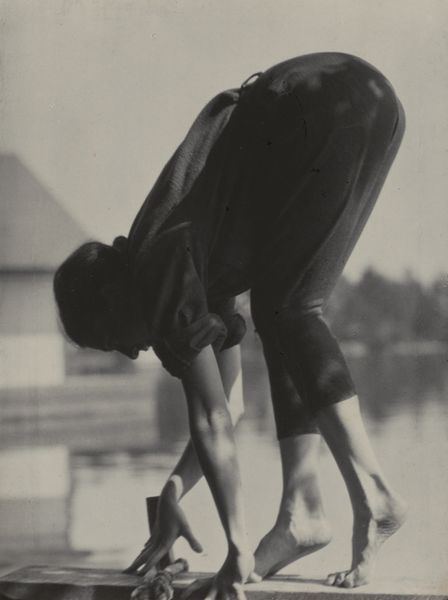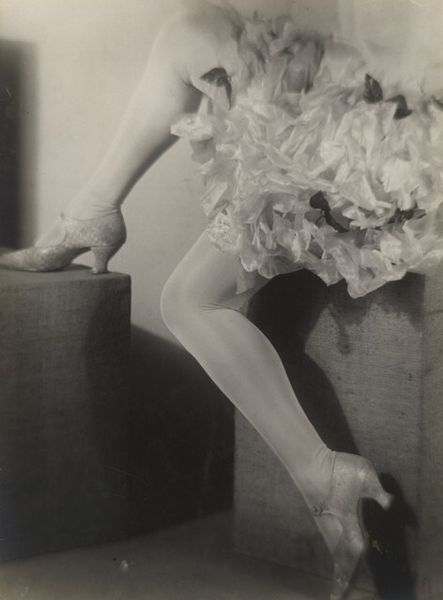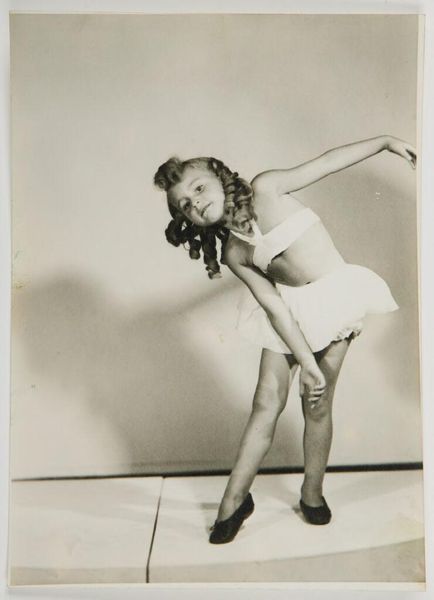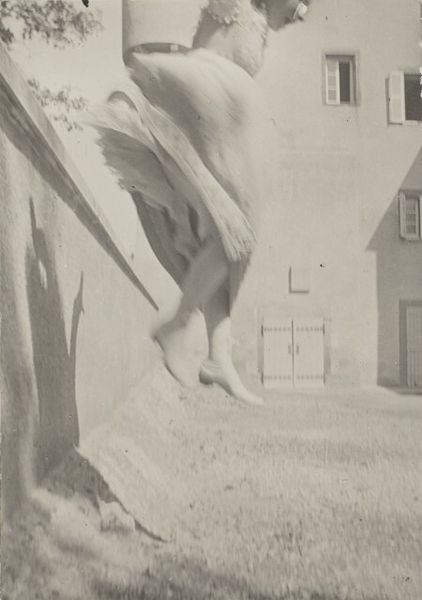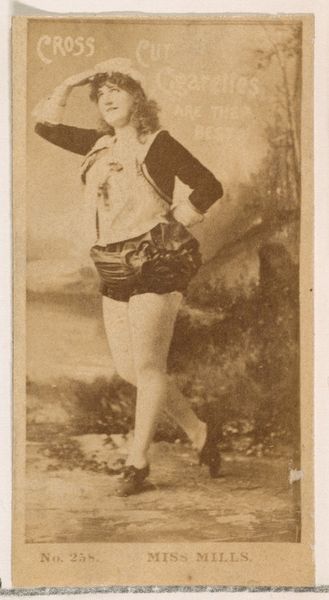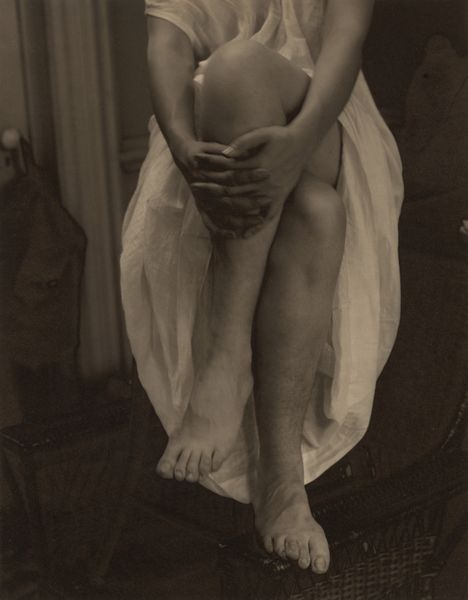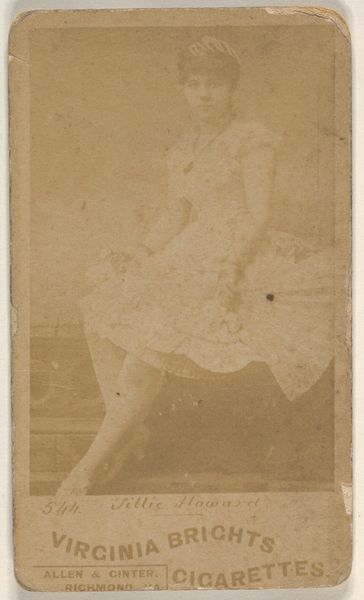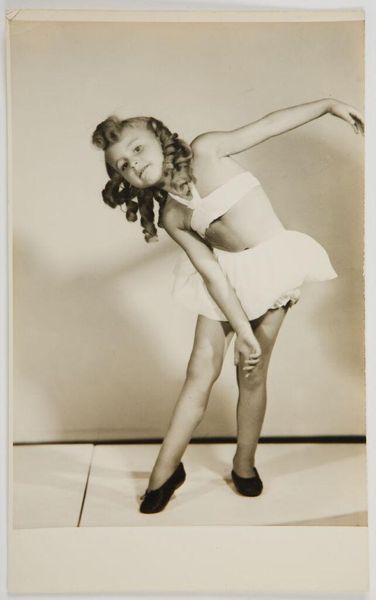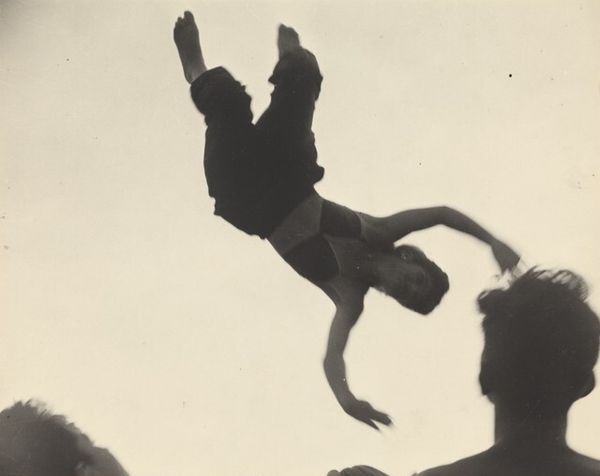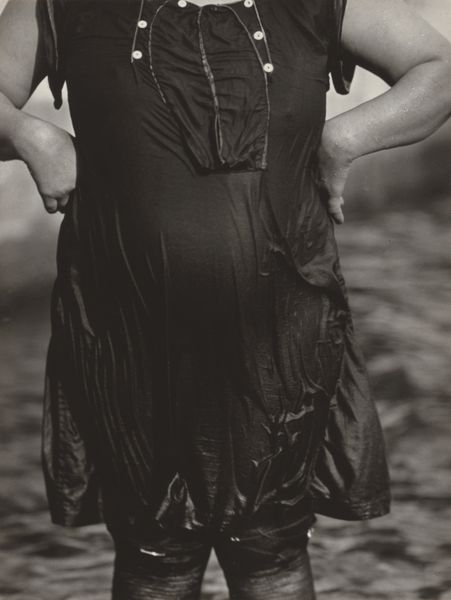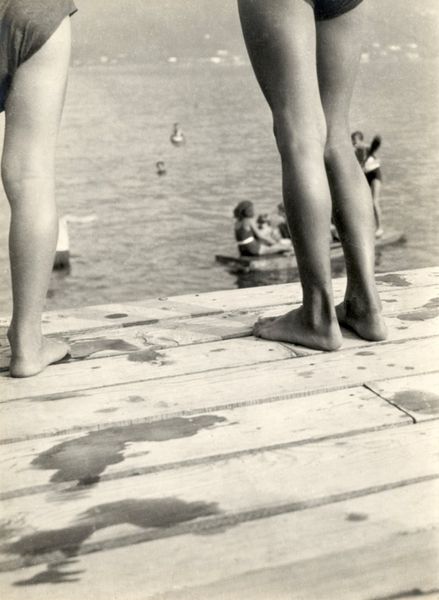
photography, gelatin-silver-print
#
portrait
#
black and white photography
#
pictorialism
#
photography
#
black and white
#
gelatin-silver-print
#
monochrome photography
#
nude
#
modernism
#
monochrome
Dimensions: sheet (trimmed to image): 10.8 × 8.3 cm (4 1/4 × 3 1/4 in.) mount: 34.25 × 27.25 cm (13 1/2 × 10 3/4 in.)
Copyright: National Gallery of Art: CC0 1.0
Editor: Alfred Stieglitz's gelatin-silver print, "Ethel Tyrrell," from 1926... It's an unexpectedly intimate photograph. It feels like it disrupts the conventions of nude photography, with its focus on texture and the slightly awkward pose. How do you read the visual language in this photograph? Curator: Stieglitz captures more than just a nude study here; he immortalizes the female form in its everyday truth. The somewhat cropped framing almost suggests a fragment of memory, of stolen moments observed, don’t you think? The textures–of the skin, the clothing–carry their own narrative weight, contributing to a story beyond mere physical appearance. Do the shoes add a note of playfulness to the composition, contrasting the weightier connotations of the nude? Editor: That’s an interesting take. I initially focused on the lack of idealization. What symbols or recurring motifs do you recognize in it, connected to a bigger history of art? Curator: Think of pictorialism; it elevates photography to an art form, but it often also veiled truth in soft focus. Stieglitz, in contrast, hints at the body as a landscape, as symbolic territory—lines, light, shade–reminiscent of classic nudes but grounded in Modernism’s realism. Is there a contrast or conflict happening that speaks to society's ever changing views of women’s role during that period? The angle avoids being conventionally alluring and suggests more human consideration. Does the sweater casually slung on her shoulder ground the subject into everydayness or invite further layers of interpretation? Editor: That's helpful—it helps me place it in art history. Pictorialism's legacy meeting Modernist realism. Curator: Indeed. Think how often cultural perceptions shape even something seemingly simple, like the choice of subject matter or the play of light and shadow. And Stieglitz, of course, was a master manipulator of light and a keen observer of human nature. His portraits always offered insight, rather than surface alone. Editor: I'm seeing much more of that interplay now. Thank you. Curator: A pleasure. And always remember that what you bring to a piece–your own cultural lens–shapes how you perceive the conversation happening between the artwork and its viewer across time.
Comments
No comments
Be the first to comment and join the conversation on the ultimate creative platform.
